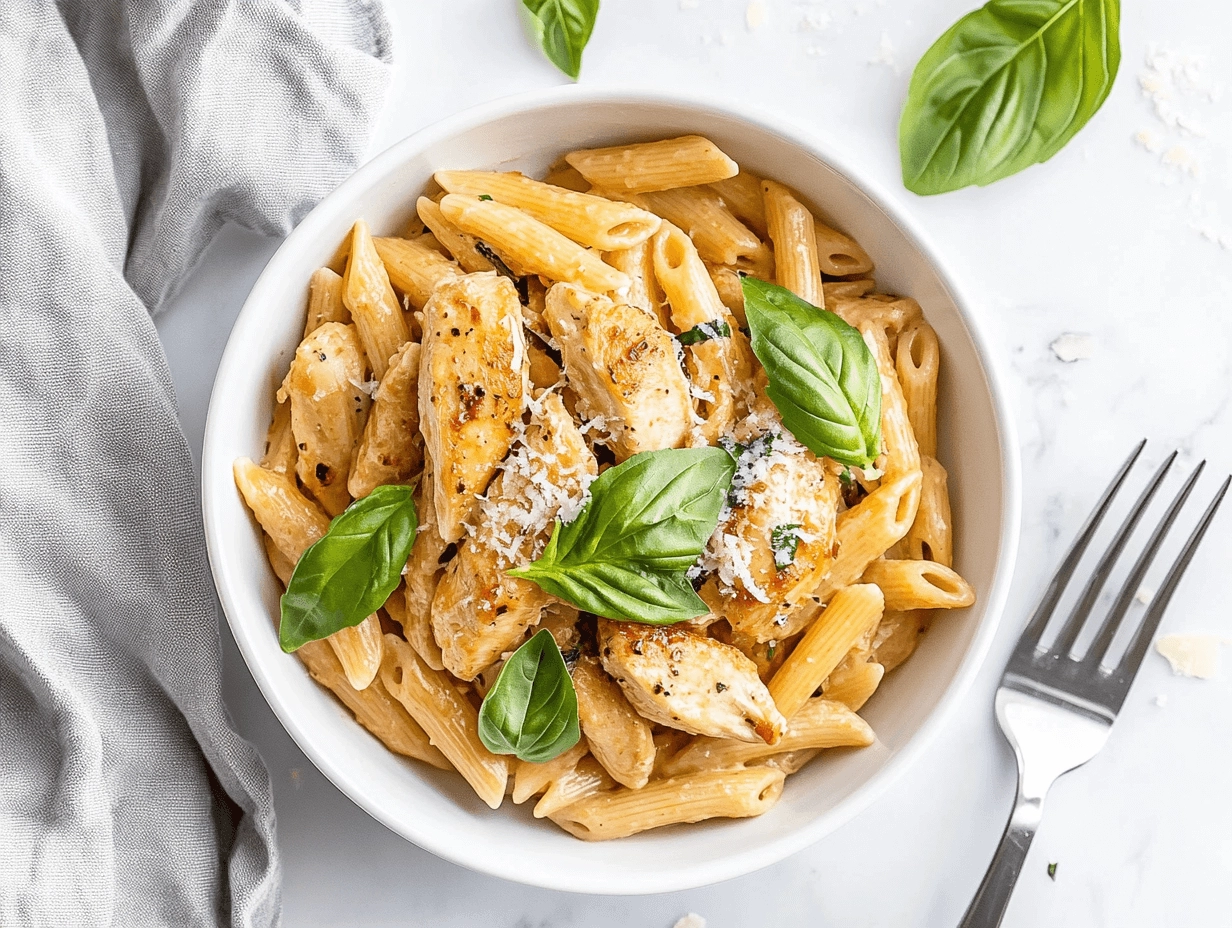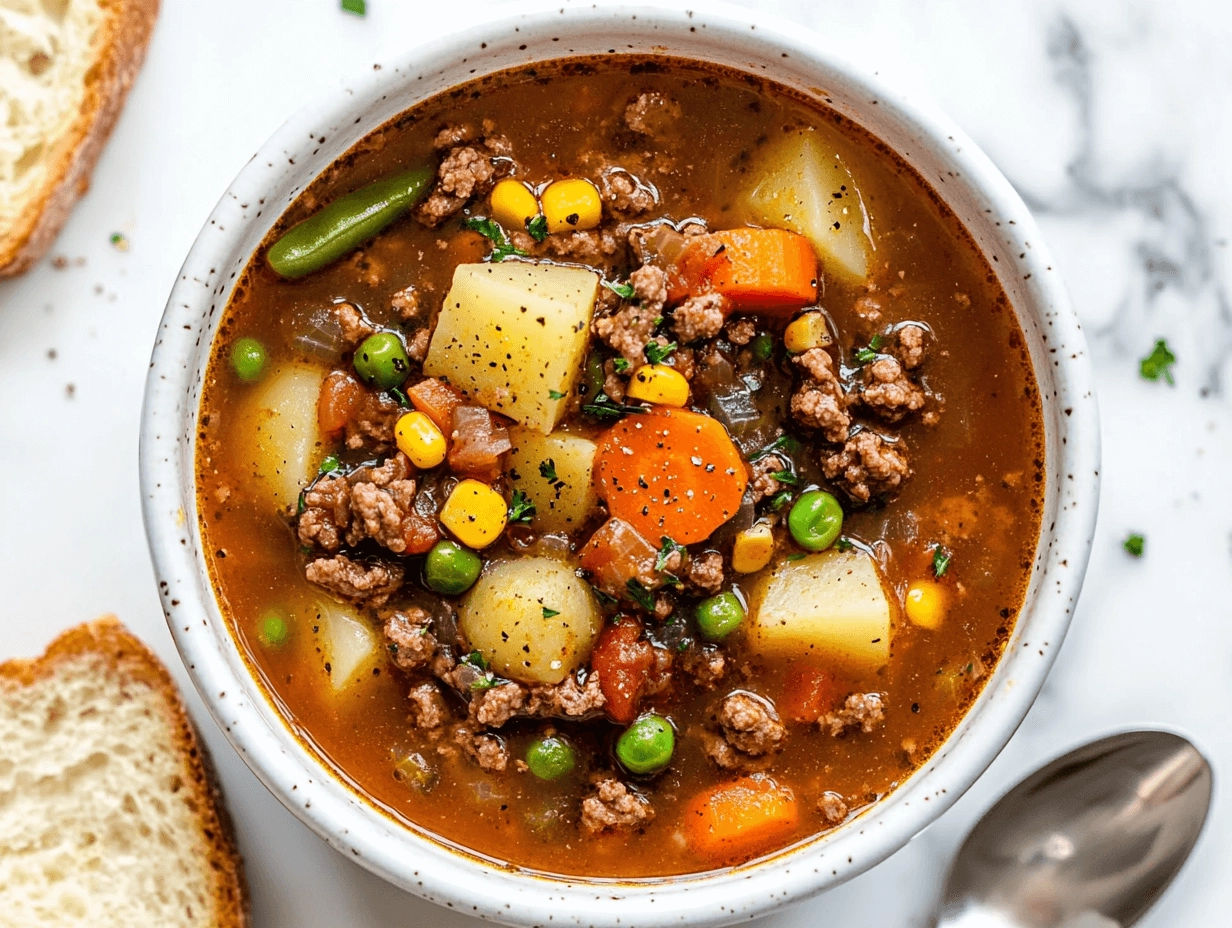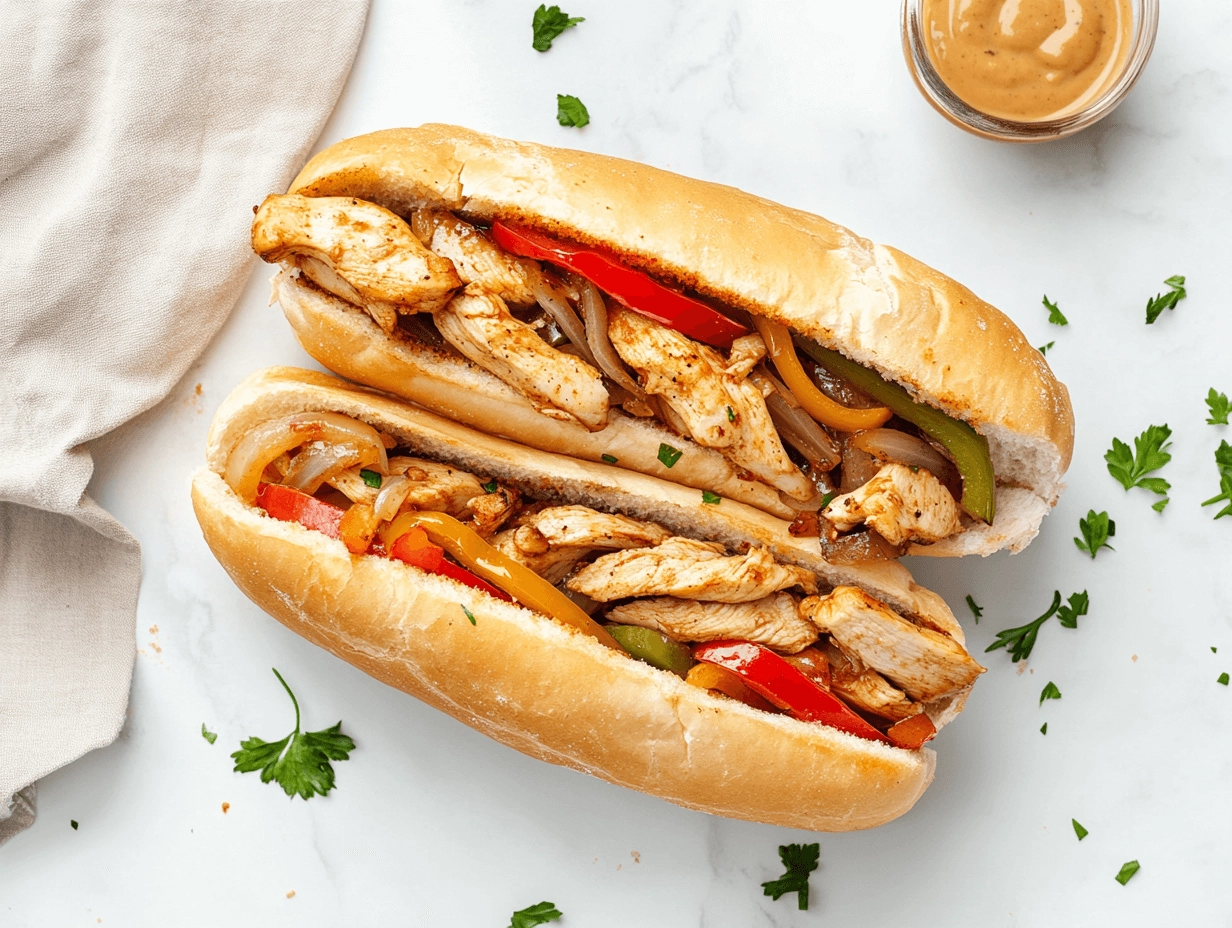Growing up, the aroma of simmering Old Fashioned Vegetable Beef Soup drifting through my grandmother’s kitchen was more than comforting—it was magical. This wasn’t just food; it was a ritual of love, bringing our family together one ladle at a time.
Making the best Old Fashioned Vegetable Beef Soup Recipe goes beyond a list of ingredients. It’s a story steeped in family heritage, slow cooking, and choosing ingredients that tell their own story. In this guide, you’ll learn to master a soup that soothes the soul and keeps tradition alive.
jump to
Discover more delicious recipes and ideas by visiting our homepage!
The History of Traditional Beef and Vegetable Soup
What makes the Old Fashioned Vegetable Beef Soup Recipe so iconic? Its roots go deep into American culinary history—when early settlers used hearty stews to nourish their families using what they had: tough cuts of meat and seasonal vegetables.
This humble soup became a symbol of comfort, resourcefulness, and connection. Passed down through generations, the Old Fashioned Vegetable Beef Soup Recipe remains a family staple, beloved for its warmth and simplicity.
Essential Ingredients for a Perfect Vegetable Beef Soup
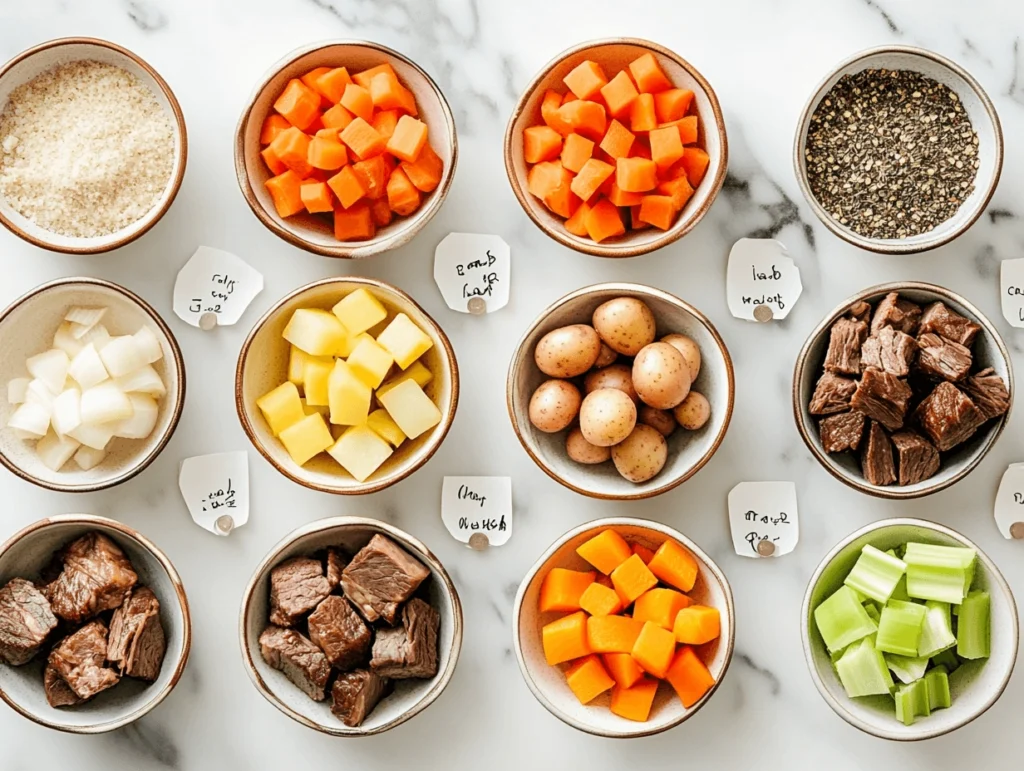
A successful Old Fashioned Vegetable Beef Soup Recipe begins with the right components:
- Chuck roast or stew meat: for rich, tender bites
- Fresh vegetables: carrots, celery, potatoes, onions
- Frozen additions: corn, green beans, peas—about 2 cups
- Seasonings: bay leaves, garlic, thyme, salt & pepper
- Beef broth: use about 6 cups plus a bouillon cube for depth
💡 Pro tip: Fresh, marbled beef and crisp vegetables will elevate your dish. Frozen veggies are a great convenience without compromising quality.
Selecting and Preparing the Best Cuts of Beef
To nail this Old Fashioned Vegetable Beef Soup Recipe, your beef needs love. Here’s what to do:
🥩 Best Cuts for Soup:
- Chuck roast: marbled and flavorful
- Beef sirloin: leaner, still tender
- 80/20 ground beef: a budget-friendly backup
🧂 Meat Prep Tips:
- Trim excess fat, cube evenly
- Dry and season well before browning
- Sear in hot olive oil to build a deep flavor base
Full Old Fashioned Vegetable Beef Soup Recipe
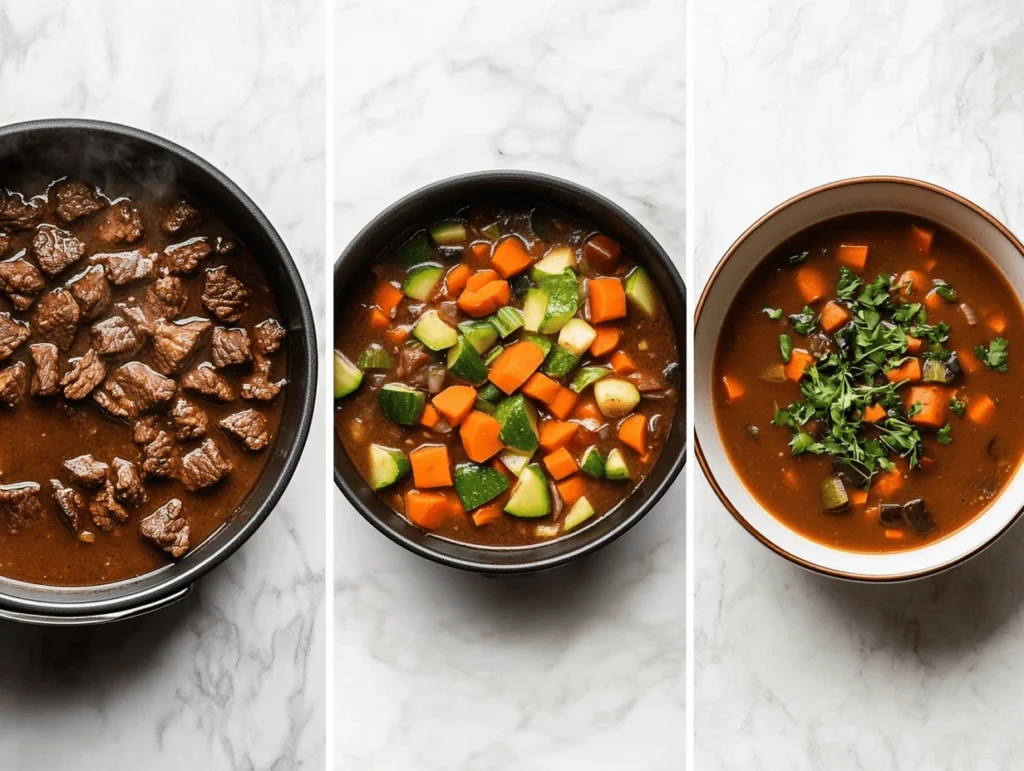
This comforting soup serves 6 and comes together with 10 minutes of prep, then slow cooking does the rest.
🛒 Ingredients:
- 2 lbs chuck roast, cubed
- 2 tbsp olive oil
- 1 onion, diced
- 3 carrots, sliced
- 3 celery stalks, chopped
- 2 potatoes, cubed
- 1 cup frozen mixed vegetables
- 6 cups beef broth
- 2 bay leaves
- Salt and pepper to taste
🍲 Instructions:
- Brown the cubed beef in olive oil until golden.
- Transfer meat to slow cooker.
- Add all vegetables and broth.
- Season with salt, pepper, and bay leaves.
- Cook on low for 8 hours.
Before serving, remove bay leaves and adjust seasoning. You’ll find this Old Fashioned Vegetable Beef Soup Recipe both nourishing and nostalgic.
🌐 Try a variation: Old Fashioned Vegetable Beef Soup Recipe #2 or Old Fashioned Vegetable Beef Soup Recipe #3
Secret Techniques for a Rich Broth
The heart of any Old Fashioned Vegetable Beef Soup Recipe is its broth. Here’s how to elevate yours:
- Roast beef bones and simmer 24–36 hours with apple cider vinegar for nutrition extraction
- Use tomato paste and Worcestershire sauce for a savory umami punch
- Add herbs like thyme and parsley at the end for a fresh lift
Let your soup rest before serving—it improves flavor and texture!
Fresh vs. Frozen Veggies
Both work well in an Old Fashioned Vegetable Beef Soup Recipe:
- Fresh: bright flavors, more crunch, great for last-minute additions
- Frozen: consistent, affordable, and great in bulk soups
✅ Use a mix for best results and select IQF frozen veggies for top texture.
Cooking Methods & Timing
Your Old Fashioned Vegetable Beef Soup Recipe can be made multiple ways:
- Slow Cooker: 8 hours on low
- Stovetop: simmer for 1.5–2 hours
- Pressure Cooker: 45 minutes
Each method brings out different flavors and textures. Choose based on your time and tools.
Storing & Reheating Tips
To keep your soup delicious:
- Cool it fast: within 2 hours, in shallow containers
- Fridge: store 3–4 days
- Freezer: up to 3 months
🌀 Reheat gently on the stovetop or microwave, removing any solidified fat for better flavor.
Serving Suggestions
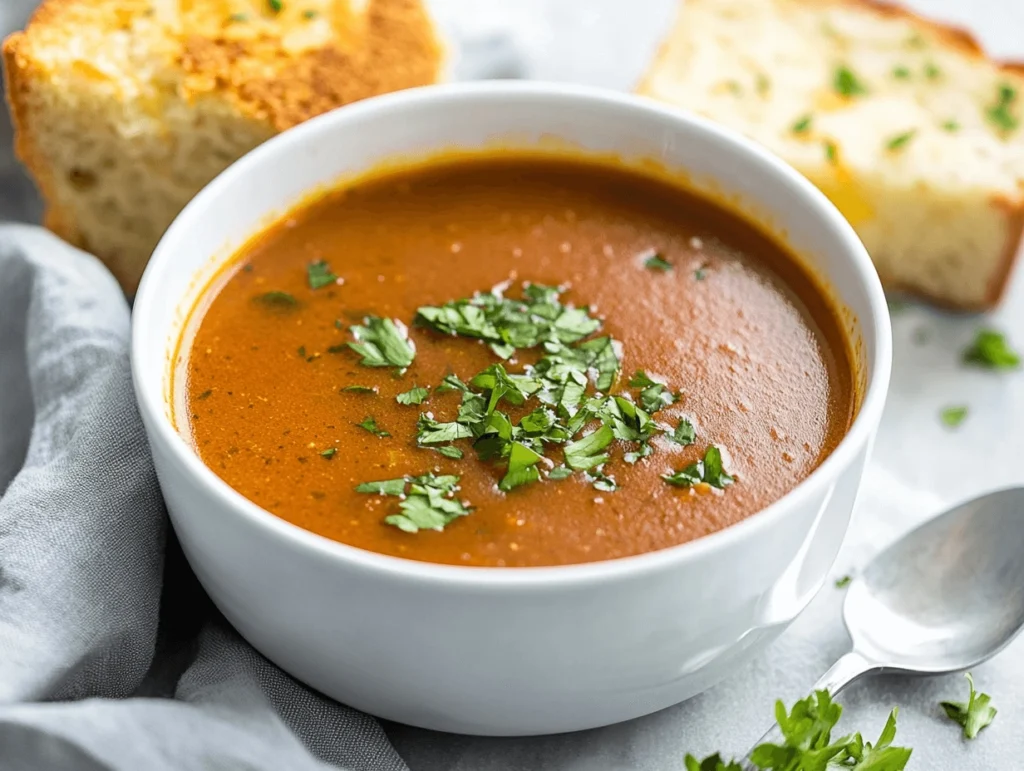
Pair your Old Fashioned Vegetable Beef Soup Recipe with:
🥖 Bread:
- Sourdough
- Cornbread
- French baguette
🥗 Sides:
- Garden salad
- Roasted vegetables
- Herb rice
🌿 Garnishes:
- Fresh parsley
- Sour cream or Greek yogurt
- Crispy croutons
Want to try a bolder version? Check out this flavorful Cowboy Stew Recipe!
FAQ – Old Fashioned Vegetable Beef Soup Recipe
Q: What makes this soup “old fashioned”?
A: It uses slow-cooked beef and simple, traditional ingredients that highlight depth and home-cooked love.
Q: Can I adapt this to my diet?
A: Absolutely. It’s easy to make gluten-free, low-carb, or dairy-free with simple substitutions.
Q: How long does it take to make?
A: Depending on the method, anywhere from 45 minutes (pressure cooker) to 8 hours (slow cooker).
Q: What beef cut is best?
A: Chuck roast is ideal—tender, flavorful, and classic.
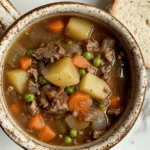
5 Steps to the Best Old Fashioned Vegetable Beef Soup Recipe
- Total Time: 8 hours 10 minutes
- Yield: Serves 6
Description
A nostalgic, hearty soup packed with tender beef, wholesome veggies, and a rich, slow-cooked broth—this is comfort food at its finest.
Ingredients
2 lbs chuck roast, cut into cubes
2 tbsp olive oil
1 onion, diced
3 carrots, sliced
3 celery stalks, chopped
2 medium potatoes, cubed
1 cup frozen mixed vegetables (corn, peas, green beans)
6 cups beef broth
2 bay leaves
Salt and pepper, to taste
Instructions
Brown the Beef:
In a large skillet, heat olive oil over medium-high. Sear beef cubes until browned on all sides, about 5–7 minutes. Transfer to a slow cooker or large soup pot.Sauté Aromatics (Optional):
In the same pan, sauté diced onion, carrots, and celery for 2–3 minutes for extra flavor.Assemble the Soup:
Add sautéed veggies, potatoes, frozen vegetables, and beef broth to the slow cooker. Drop in bay leaves, season with salt and pepper.Cook Low & Slow:
Slow cooker: Cook on low for 8 hours.
Stovetop: Simmer gently for 1.5–2 hours, covered.Finish & Serve:
Remove bay leaves, taste, and adjust seasoning. Ladle into bowls and serve hot with crusty bread or a fresh salad.
Notes
- Want a richer broth? Add 1 tbsp tomato paste and a splash of Worcestershire sauce.
- Beef tips: Chuck roast is ideal for flavor and tenderness after slow cooking.
- Freezer tip: Freeze in portions for up to 3 months for quick meals.
- Prep Time: 10 minutes
- Cook Time: 8 hours (slow cooker)
- Cuisine: American
Nutrition
- Calories: ~350
- Sodium: ~600mg
- Fat: ~18g
- Carbohydrates: ~20g
- Fiber: ~4g
- Protein: ~30g
Conclusion
This Old Fashioned Vegetable Beef Soup Recipe isn’t just about feeding your family—it’s about connecting to the past while creating new memories. Whether you follow it step-by-step or make it your own, this recipe brings warmth, comfort, and flavor to any table.


